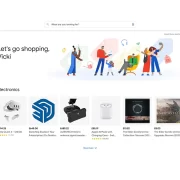Cold outreach can be effective for several reasons:
- Reach new leads: It allows you to reach out to potential customers who may not have heard of your business before or shown any interest. This can expand your reach and potentially bring in new customers.
- Personalization: By researching your target audience and customizing your outreach messages, you can provide personalized solutions to their problems or needs, which can increase the chances of conversion.
- Cost-effective: Compared to other forms of marketing, cold outreach can be relatively cost-effective as you can reach a large number of potential customers without spending a lot of money.
- Establishing relationships: When done right, it can help establish relationships with potential customers and create a positive impression of your brand.
5 Common Mistakes in Cold Outreach
1 Not personalizing the outreach message
2 Focusing too much on the sale
3 Sending too many follow-ups
4 Using the wrong communication channel
5 Not providing value
Why do we make these mistakes?
- Lack of time: People may feel that they don’t have enough time to personalize their messages or research the recipient’s needs and preferences. This can lead to generic, ineffective outreach messages.
- Limited information: Lack of enough information about the recipient to personalize the message effectively. Research on the recipient’s company or industry can give you more insights.
- Fear of rejection: Cold outreach can be daunting, especially when you’re reaching out to someone you don’t know. Fear of rejection can prevent people from sending effective outreach messages and following up appropriately.
- Lack of expertise: People may not have the expertise or skills to write effective outreach messages, resulting in messages that are ineffective or unprofessional.
- Technology barriers: Technology can be a challenge for some people, especially when it comes to using different communication channels. This can lead to using the wrong channel or not using technology effectively to manage outreach efforts.

Fear of Rejection
It’s difficult to say which mistake is the most difficult to overcome, as different people may struggle with different aspects of cold outreach. However, fear of rejection is a common challenge that can be particularly difficult to overcome, as it can be a deeply ingrained fear that affects people on a personal level.
Fear of rejection can manifest in several ways, such as avoiding cold outreach altogether, sending generic messages that are unlikely to get a response, or failing to follow up effectively. Overcoming this fear requires building confidence in oneself and one’s abilities, as well as accepting that rejection is a natural part of the outreach process.
Some strategies that can help people overcome their fear of rejection in cold outreach include setting realistic expectations, preparing for potential objections, practicing effective communication skills, and focusing on the value that they can offer to the recipient. It may also be helpful to seek support from colleagues, mentors, or coaches who can provide guidance and feedback.
How to Avoid Making These Mistakes
Research the Recipient
Focus on Building Relationships
Use the Right Communication Channel
Practice Effective Communication Skills
Follow Up Appropriately
Seek Feedback and Support
Embrace Rejection
Tangible Benefits
- Increasing your success in cold outreach: Personalizing your message, building relationships, using the right communication channel, and following up appropriately, will help you increase your chances of getting a response and achieving your desired outcome.
- Improving communication skills: By practicing effective communication skills, such as active listening, asking open-ended questions, and responding to objections, you improve your overall communication skills, which can benefit you in both personal and professional settings.
- Increasing your confidence: By seeking feedback and support, practicing effective communication skills, and embracing rejection, you can increase your confidence in yourself and your abilities, which can translate into other areas of your life.
- Enhancing your reputation: By taking the time to research the recipient, personalize your message, and offer value, you can enhance your reputation as a professional who cares about their needs and wants to help them succeed.
- Better relationships: By focusing on building relationships, rather than just closing a sale, you can build better and more meaningful relationships with potential clients, colleagues, and other professionals in your industry.
Keep on Reading...
A review of top lead generation tools in the market.




